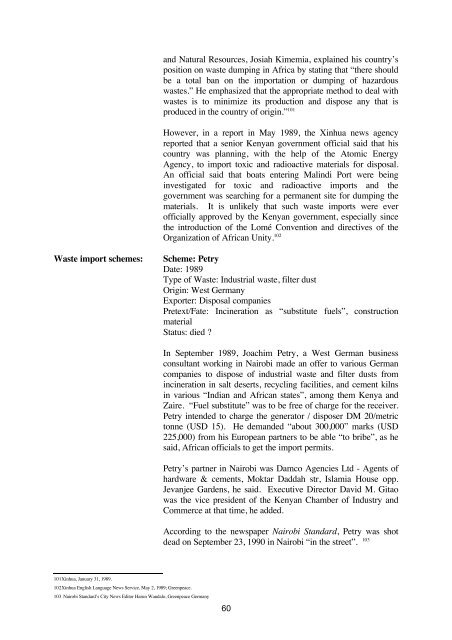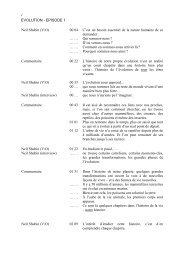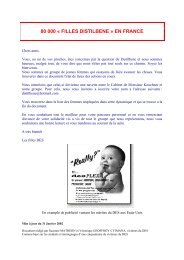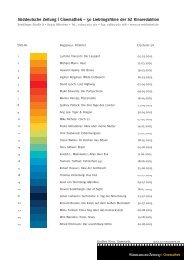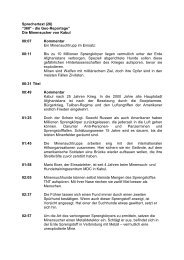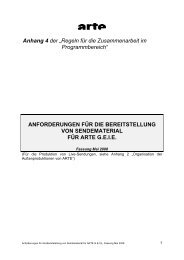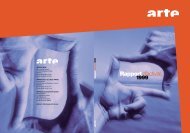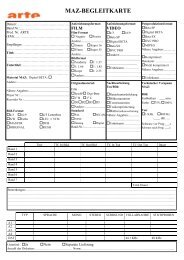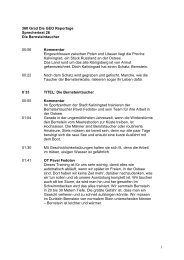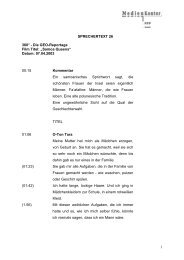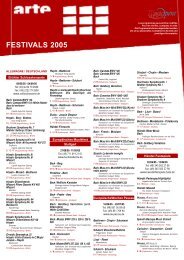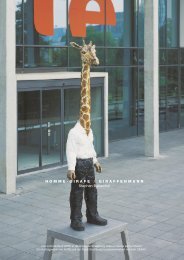POPs IN AFRICA HAZARDOUS WASTE TRADE 1980 - 2000 ... - Arte
POPs IN AFRICA HAZARDOUS WASTE TRADE 1980 - 2000 ... - Arte
POPs IN AFRICA HAZARDOUS WASTE TRADE 1980 - 2000 ... - Arte
You also want an ePaper? Increase the reach of your titles
YUMPU automatically turns print PDFs into web optimized ePapers that Google loves.
and Natural Resources, Josiah Kimemia, explained his country’s<br />
position on waste dumping in Africa by stating that “there should<br />
be a total ban on the importation or dumping of hazardous<br />
wastes.” He emphasized that the appropriate method to deal with<br />
wastes is to minimize its production and dispose any that is<br />
produced in the country of origin.” 101<br />
However, in a report in May 1989, the Xinhua news agency<br />
reported that a senior Kenyan government official said that his<br />
country was planning, with the help of the Atomic Energy<br />
Agency, to import toxic and radioactive materials for disposal.<br />
An official said that boats entering Malindi Port were being<br />
investigated for toxic and radioactive imports and the<br />
government was searching for a permanent site for dumping the<br />
materials. It is unlikely that such waste imports were ever<br />
officially approved by the Kenyan government, especially since<br />
the introduction of the Lomé Convention and directives of the<br />
Organization of African Unity. 102<br />
Waste import schemes: Scheme: Petry<br />
Date: 1989<br />
Type of Waste: Industrial waste, filter dust<br />
Origin: West Germany<br />
Exporter: Disposal companies<br />
Pretext/Fate: Incineration as “substitute fuels”, construction<br />
material<br />
Status: died ?<br />
101Xinhua, January 31, 1989.<br />
102Xinhua English Language News Service, May 2, 1989; Greenpeace.<br />
103 Nairobi Standard’s City News Editor Harun Wandalo, Greenpeace Germany<br />
In September 1989, Joachim Petry, a West German business<br />
consultant working in Nairobi made an offer to various German<br />
companies to dispose of industrial waste and filter dusts from<br />
incineration in salt deserts, recycling facilities, and cement kilns<br />
in various “Indian and African states”, among them Kenya and<br />
Zaire. “Fuel substitute” was to be free of charge for the receiver.<br />
Petry intended to charge the generator / disposer DM 20/metric<br />
tonne (USD 15). He demanded “about 300,000” marks (USD<br />
225,000) from his European partners to be able “to bribe”, as he<br />
said, African officials to get the import permits.<br />
Petry’s partner in Nairobi was Damco Agencies Ltd - Agents of<br />
hardware & cements, Moktar Daddah str, Islamia House opp.<br />
Jevanjee Gardens, he said. Executive Director David M. Gitao<br />
was the vice president of the Kenyan Chamber of Industry and<br />
Commerce at that time, he added.<br />
According to the newspaper Nairobi Standard, Petry was shot<br />
dead on September 23, 1990 in Nairobi “in the street”. 103<br />
60


